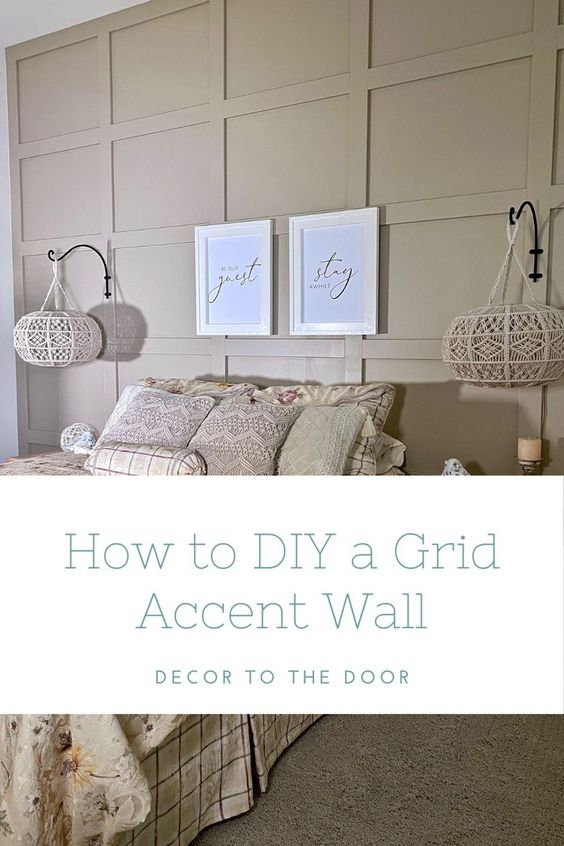
by California Casualty | Educators |
In our world of constant communication, it’s easy to be distracted from really listening to someone. Yet good listening skills take us far—in the classroom and beyond. Good listening skills build relationships and resolve conflicts. They help students learn, and help all of us make fewer mistakes and waste less time.
As teachers, we understand that listening is an important soft skill, but we may not teach it. Here’s why you should, along with some guidance on how to improve listening skills for you and your students.
Active vs. Passive Listening
It’s easy to be a passive listener. That’s listening as we multitask. As passive listeners, we divide our attention between listening and doing something else. That does not benefit us as teachers or students. Rather, active listening – focusing all of our attention on receiving and processing information – helps us to fully understand what is being communicated.
Active listening helps students:
-
- Follow directions
- Understand expectations
- Spend more time on task
- Connect to content and increase understanding
Active listening helps educators:
-
- Better understand student needs
- Provide meaningful feedback
- More fully engage students
- Communicate well with parents, peers, and the administration
How to Teach Active Listening
It feels good when someone is actively listening to you. Demonstrate that to your students by modeling two conversations – one with active listening and one with passive. Discuss the importance of active listening. Then, walk them through the process of how to be an active listener together.
To be an active listener you need to…
1. Focus.
It’s easy to be distracted by the things in our environment, from our phones and devices to other people and happenings around us. To be a really good listener, you have to focus solely on the person talking to you.
Don’t multi-task, look around, or think about things you need to do.
Do give the speaker your undivided attention. Put aside your phone, papers, or any potential distractions. Face the speaker and maintain eye contact. Be present in the moment.
2. Receive.
The best listeners are those who are receptive to new information. You need to be ready to receive a message in order to listen. Importantly, good listeners are not critical. They create a safe environment where others may share their thoughts.
Don’t be judgmental. Don’t engage in a conversation if you’re not ready to listen.
Let go of your opinions during the conversation. Listening does not mean you agree with the message, only that you respect another’s right to express it.
3. Visualize.
As the saying goes, a picture is worth a thousand words. That’s why it’s helpful to visualize what the other person is saying. In addition, knowing the speaker’s emotional state will help you more fully understand what he or she is trying to communicate.
Don’t assume you know what the speaker is saying or feeling.
Do listen to the words and picture what the speaker is saying. Pay attention to the speaker’s nonverbal cues, from body language to the tone of his or her voice. Try to feel what the speaker is feeling.
4. Wait.
It’s tempting to interrupt a speaker and impose your thoughts or solutions right away—especially if he or she says something that relates to your life. It’s easy to get sidetracked but that’s not good listening. We all think and talk at different rates. Let the other person have a chance to speak.
Don’t interrupt or jump in with your own thoughts or questions. Don’t finish the other person’s sentences. Don’t sidetrack the conversation by starting a new, related or unrelated conversation.
Be patient. At first, it might be hard to simply wait. With practice, it will get easier.
5. Understand.
Eventually, you’ll want to ask a question or two. Questions show that you are listening and that you want to understand what the speaker is saying. Your goal is empathy—to feel what the speaker is feeling. Empathy creates a connection like nothing else does.
Don’t spend the time planning what to say next. It will distract you from what’s being said.
Do wait until the speaker pauses to ask questions to clarify the message. You can say something along the lines of “Can we back up for a moment? I have a question about …”
6. Respond.
You do not have to be perfectly silent or still in the listening role. Good listeners consistently provide feedback whether it’s a word of confirmation or a nod of agreement.
Don’t just sit there or zone out, even if you’re bored.
Do nod and show your understanding through appropriate facial expressions. Interject with a well-timed “hmm” or another simple statement that confirms the message the speaker is sharing.
7. Summarize
You will want to ensure that you correctly understood the message. At the end of the conversation, try telling the speaker what you heard.
Don’t make a long summary statement. The purpose is not to capture every detail but merely the essence of the message.
Do let the speaker know that this is what you understood and ask for clarification if it is wrong. If there’s follow-up to the conversation needed, now is the time to mention the next steps.
Practicing Active Listening
Active listening takes practice. Model good listening skills and call attention to them as you are doing them. Involve students in the process regularly with active listening activities. Examples include:
-
- Partner conversations
- Journal entries following a lesson or other presentation
- Listen and draw a story
- Outdoor sound scavenger hunt
- Mindful listening meditations
This article is furnished by California Casualty, providing auto and home insurance to educators, law enforcement officers, firefighters, and nurses. Get a quote at 1.866.704.8614 or www.calcas.com.

by California Casualty | Homeowners Insurance Info |
Have you spent years dreaming about a home makeover? Or find yourself sitting on social media watching others DIY thinking ‘why can’t I do that?’ You CAN! Believe it or not, you don’t have to be a design expert to create a cozy corner, a relaxing vibe, or a stylish space in your home. Here are some quick and easy DIY room makeovers for your home that you can do this spring to give your space a nice little refreshing update- on a budget.

Bedroom
– Choose a color scheme. Pick two main colors and use them to choose varying textures and patterns which will add visual interest. This will help tie together the look of your room, whether it’s a bedroom or other room in your home. Best colors for bedrooms are cool, relaxing tones. Think shades of blue and muted greens.
– Showcase your headboard. The bed is the focal point in your room. Give it a little drama with the right headboard. For an easy fix, use a curtain behind your bed as the headboard. Make your own fabric headboard with material that matches your color scheme.
– Remember the fifth wall. Who said ceilings need to be white? In bedrooms, we spend our share of the time staring at the ceiling. Paint the ceiling a color, and see how it transforms the space.
– Hang drapes from floor to ceiling. Go a few inches above your window to add height, and have the drapes go down to the floor for an elegant feel.
– Get fancy with hardware: Chances are that your nightstands and dressers have traditional knobs. Change them out for tassel hardware or other fancy options.

Living Room
– Create a gallery wall. Choose the photos that represent wonderful moments in your life, and images of the people who are most important to you. For a cohesive look, choose the same color frames. Make it a statement wall by painting it a color that’s different from the other three walls.
– Include a hobby piece. Do you love to travel? Perhaps you play guitar. See if you can incorporate some of your favorite past times in the décor. A surfboard shelf, framed albums, a world map, or a guitar hung on your wall not only is a decoration, but a reminder of your happy place.
– Wallpaper a wall. Removable wallpaper lets us change our style without the long-term commitment. Choose a vibrant pattern in your color scheme for one focus wall. The wallpaper becomes the art and sets the tone for the space.
– Add wainscoting to your wall. This decorative trim transforms a room with its elegant accent pieces. You can even use the trim as a guide and paint the wall different colors above and below.
– Conceal the clutter. Use baskets or decorative boxes to store magazines, electronics, and loose items that you use regularly. Place them on a bookshelf to keep them out of the way.
– Add an area rug. It doesn’t matter if you have a carpet already in your living room. You can still add an area rug on top. Choose a pattern in your color scheme and it becomes artwork for your floor.

Kitchen
– Add a backsplash. It creates a beautiful focal point behind the stove and in other places above the counters. There are so many options available, from glass mosaics to tile to peel-and-stick. You can find online tutorials on how to install a backsplash from the major retailers and home improvement sites.
– Upscale your knobs and handles. Give your drawers and your cabinets a fresh look by changing out the knobs and handles. It’s a lot easier than painting cabinets, though you can do that, too.
– Install a pot rack on your wall. It’s an easy way to display your cookware while freeing space in your cabinets for other utensils.
– Add under cabinet lighting. You don’t need to be an electrician to install this type of lighting, which is self-adhesive and comes in strips that can be trimmed to fit your space. It plugs into a standard outlet and some models come with dimmer switches.

Bathroom
– Upgrade that mirror. You don’t have to spend a fortune to switch out your plain bathroom mirror for one that will be a focal piece. You can add your own frame. You can also reimagine the space with a find from the local thrift shop. Don’t hesitate to add paint for that special look.
– Paint your bathroom vanity. A little paint can transform an old vanity into a beautiful piece. Switch out the knobs and drawer hardware for an even newer look.
– Change out your towel rack. You can find many towel racks at your local home improvement store. If you have the time, consider making your own to highlight your own personal style.
Not sure where to start?
– Create a mood board. Collect images of items that you like. You can do this on Pinterest or on a PowerPoint or Word document. You can even do it old school and paste the pictures on a board.
– Find your color scheme in a favorite piece of art. See if those colors will work for your room, and of course, make sure that the art piece is part of the décor.
– Move furniture around. Take out a piece of furniture. See what works and what doesn’t for your space.
For more spring DIY décor inspo, check out our Pinterest Board- Staycation DIYs! Be sure to follow us for every new DIY we discover.
Happy decorating! 🙂
This article is furnished by California Casualty, providing auto and home insurance to educators, law enforcement officers, firefighters, and nurses. Get a quote at 1.866.704.8614 or www.calcas.com.

by California Casualty | Homeowners Insurance Info |
Getting your house ready to sell can seem like a daunting task. But the good news is, it doesn’t have to be! Knowing what to do, and giving yourself enough time to do it, are the key to keeping it a manageable, and (hopefully) stress-free, experience.
Follow these tried-and-true guidelines to get your home ready to sell.
Tip #1: Clean your home.
It may seem obvious but a dirty home discourages buyers and also can actually influence home appraisers and inspectors. Cleaning your home not only gives the impression that you take care of it, but when you clean, you will also start to notice things that you may want to address before putting your home on the market. For example, you might see a wet spot that indicates a leak or mold. Chances are you’d have to fix that before the sale goes through, so add it to your checklist. Remember, when you clean, make sure that all areas are easily accessible.
Tip #2: Install safety equipment.
Your state may require smoke detectors and carbon monoxide alarms. These are important safety devices that save lives. Understand your local safety requirements and make sure that your home meets them before putting it on the market.
Tip #3: Clean your yard.
As the saying goes, you never have a second chance to make a first impression. The first time that potential buyers will see your home will be from the outside. Therefore, curb appeal is key. Cut the grass, rake the leaves, weed the garden, and trim overgrown shrubs. Take care of obvious problems such as leaves clogging gutters, rotting trim boards, and dead trees. Power wash your house, driveways, and deck. Remove clutter such as toys and bicycles. And if you have the time, plant flowers or greenery.
Tip #4: Make easy home improvements.
Appraisers tend to measure your home’s value in increments of $500. Therefore, if you have obvious damage or you’re missing key items, it could add up against you. Walk around and look with a critical eye. Address the improvements that are easy and affordable: broken doors, nonfunctional locks, faulty light switches, leaky faucets, and other minor issues. If you can, take on the slightly more advanced items such as roof leaks, damaged siding, broken tiles, peeling paint, or anything that looks like neglect. Remember that the kitchen is a key room for buyers. The fastest and easiest way to update this room is with paint and new cabinet hardware.
Tip #5: Get the appraisal done early.
If you’re selling your home, you have to get it appraised. An appraisal* is a professional estimate of your home’s market value. A low appraisal means a lower selling price, so it’s important to present your home for its best value. Schedule it early; this way, if the inspector finds a defect, you can fix it before putting your home on the market.
*Note: An appraisal and a home inspection are not the same thing. A home inspection is a detailed inspection of a home’s plumbing, electric, HVAC systems, roof, and more. It’s almost always the buyer’s responsibility to cover that cost, and it’s done before the sale is closed.
Tip #6: Make a list of upgrades and share documents.
An appraiser won’t automatically know the home improvements you have made, especially since some aren’t easily visible. That’s why it’s helpful to put together a list of improvements. Include dates and warranties if you have them. There are other documents that will be helpful to have ready for your appraiser, including comparable sale numbers in your neighborhood and the home survey that was done when you purchased your home. Your lender or title company may have the property survey on file. If not, try the local tax assessor’s office.
Tip #7: Ask your real estate agent to attend the appraisal.
You’ll want to make it as easy as possible for the appraiser to give your home the value it deserves. Ask your real estate agent to join you at the appraisal and bring comparable sales data to support the sales price. Have him/her talk up the neighborhood and any other selling features: a good school system, a central location. Even having a Trader Joe’s, Starbucks, or Whole Foods nearby can influence home valuation.
Tip #8: Stage your home.
Now the fun begins! Here’s when you or your realtor team can update your home’s décor for a more modern and neutral look. Here are some ideas.
-
-
-
- Repaint walls, hang new curtains, change out lampshades.
- Install shiny new hardware such as doorknobs or faucets.
- Let the light in: clean windows, trim bushes blocking windows, and take down heavy drapes. Increase the wattage in your light bulbs.
- Empty half of the clothes in your closet. Rearrange the remaining clothes so they’re beautifully organized, and box up the rest.
- Take a third of your stuff and put it in storage. Include items like family memorabilia, pictures, etc. You want to depersonalize your home as much as possible.
- Conceal evidence of your pets. If you’re expecting visitors, move their food and water dishes, litter box, and other items away from the main areas. Make sure your home doesn’t smell like pet, too.
- Create a welcoming mood with an entryway that has a small bench, a vase of fresh-cut flowers, or some cookies.
- Keep your home at a comfortable temperature and make sure it’s ready to be shown at a moment’s notice.
For more tips, see our blog on Real Estate Tips for a Hot Market.
This article is furnished by California Casualty, providing auto and home insurance to educators, law enforcement officers, firefighters, and nurses. Get a quote at 1.866.704.8614 or www.calcas.com.

by California Casualty | Auto Insurance Info |
No matter the situation, it’s stressful to be in a car crash. It’s even more nerve-wracking if the other driver refuses to stop. In a hit-and-run, you’re left all alone with all of the damage—and if you can’t find the other driver—the cost.
A hit-and-run is defined as a collision where at least one driver leaves the scene without sharing information or offering help. In most states, this is against the law, but it happens more often than you think- every 43 seconds someone is the victim of a hit-and-run. If there’s damage to your car, a hit-and-run could be a misdemeanor but if there’s also injury, it could be a felony.
So what do you do if a hit-and-run happens to you?
Step #1: Safety comes first. Check for injuries and that you’re in a safe location.
If you’re hurt and need immediate medical attention, call 9-1-1. If your car is in a dangerous location, and could be hit again, move it out of harm’s way.
Step #2: Look for a witness.
Look for a witness. If witnesses are nearby, ask if they’d make a statement. Take their contact information to share with police. (This is good advice for any type of accident.)
Step #3: Write down as much information as you can. Take photos.
Take a moment and write down what you remember about the accident, including the most important thing—the license plate number if you saw it. That will help the police to locate the vehicle. Also include information about the other car, such as the vehicle’s make and model, color, and direction of travel. If you saw who was driving, include a description of that person. Then, take photos of the damage to your car and the place where the accident occurred.
Step #4: Stay where you are and call the police.
In some states, it’s legally required to call the police. You’ll want to do so even if it’s not and even if the damage wasn’t serious. The police need to get out there immediately to make a report from the scene of the accident so that they can help to track down the other driver. In addition, your insurance provider will likely ask for a copy of the police report. Police reports document any physical evidence such as tire marks as well as any witness statements.
Step #5: Call your auto insurer.
Let your insurer know about the accident and file a claim. Calling your insurance company will allow you to find out coverages available, limits, and deductibles. If you don’t have a body shop, they can often refer you to one in your area. At California Casualty, we call these “GRN’s” – Guaranteed Repair Network. These approved independent facilities meet the company’s strict customer service and quality standards. Your insurer will let you know about the repair process and will share information on whether your policy covers a rental car while your vehicle is being repaired.
Step #6: If you need a tow, call roadside assistance.
If your car is damaged to the point where it cannot be driven, have it towed to your body shop.
Know your towing limits. Some coverage will take your car to the nearest place of repair. You may have to pay out-of-pocket if you to tow your car further. Finally, before any work can be done to repair your car, you will want to verify the process with your insurance company.
Who pays for repairs from a hit-and-run?
If you’re able to locate the other driver and he/she is insured, you will be able to file a claim with the driver’s insurance company. If that’s not the case, you have a couple of options. These vary by state and are also determined by how your insurance company handles hit-and-run accidents.
Collision Coverage
Your collision insurance kicks in if you don’t have underinsured or uninsured motorist coverage. If your car is totaled, collision coverage offers either “actual cash value” for your vehicle or the amount necessary to repair or replace the vehicle with another of similar kind and quality—subject to the deductible. There are certain cases where the deductible could be waived; check with your insurer. Collision applies both to accidents with other drivers and collisions with objects such as a fence or mailbox. It also covers vehicle rollovers. Unlike liability insurance, collision coverage is not usually required—unless you’re leasing a car or paying off a loan on a vehicle. However, it may be good to have, especially in the event of a hit-and-run.
Uninsured/Underinsured Motorist Property Damage
One reason that a driver might run from the scene of an accident is if he or she does not have car insurance. If that’s the case, even if the police identify the driver, you cannot file a claim with his/her insurance company. If you have uninsured/underinsured motorist property damage, you can use that to pay for repairs. These are optional coverages in the majority of states. In some states, you are not allowed to carry collision and UMPD at the same time. Also, sometimes UMPD has a policy maximum, or cap on the amount it will pay. If you have UMPD/UIMPD, and it isn’t enough to cover the total cost of your car, your own collision coverage will help.
Having the right coverage is important for protecting your vehicle and keeping you from having to pay thousands in the event of an accident that is not your fault. Schedule an annual review with your insurer to make sure you are fully protected. Then, stay on top of your coverage by managing your account online.
This article is furnished by California Casualty, providing auto and home insurance to educators, law enforcement officers, firefighters, and nurses. Get a quote at 1.866.704.8614 or www.calcas.com.

by California Casualty | Educators |
This article is written by former New Jersey first grade teacher, Felicia Niven.
If you’ve ever played music in your classroom, you know it can transform the mood in a minute. Music is the language everyone speaks- even kids. We instinctively react energetically to lively tunes, and relax when soothing classical is played. In fact, music is a powerful tool in classroom management as well as learning.
How can you implement using relaxing music to improve student behavior and engagement in your classroom? Read on.
Studies show that music has real physical effects.
It’s no coincidence that music affects our mood. Studies have shown that music stimulates endorphins and improves our sense of wellbeing. It lowers our heart rate and reduces stress and anxiety. In one study, students who regularly listened to a half-hour of quiet morning music got less upset than their peers. Another study found that background music helped students stay on task, self-monitor their behavior, and improve their motivation.
Music helps in learning.
Music promotes brain plasticity, the ability of our brains to change and adapt to new things.
It stimulates both the left and right sides of the brain. The left side is more verbal and analytical. It responds to the sequence of sounds organized in a pattern. The right side is more emotional. It taps into feelings, visualization, and imagination. Using music as part of your lessons, or transitions between, adds another layer to learning for your students.
Ways to Use Music in Your Classroom
Incorporating music will take a bit of a learning curve if you haven’t done it already. Remember to listen to any tracks before you use them so there are no surprises. Determine how you’re playing the music (e.g. Smartboard, CD player, computer, iPad). You’ll want to practice with your students in the same way that you teach them beginning-of-the-year routines so they know what is expected. Trust us, the benefits will be worth the effort.
Here are some tried and tested ways that teachers are using music in the classroom.
1. Set the tone at the start of the day.
Imagine entering a room filled with relaxing background music. It automatically sets the tone for quiet voices and the behavior expected. Play music as you’re setting up for the day and keep it on as students come in. Turn it off when it’s time for the pledge of allegiance and the official start to the day.
2. Schedule a meditation moment.
Give your students a different kind of brain break—a guided meditation to music. It’s one way to keep mindfulness in the classroom, and it helps students calm themselves and focus.
3. Use music for transitions.
Transitions can be tough, especially for students who don’t have a clear concept of time. Choose a short piece of music to signal transitions. Teach students to put away their things or clean up by the time the song ends. While not necessarily relaxing music, TV theme shows are often a good length for transition pieces.
4. Make it memorable.
Memorizing a long list of facts, from state capitals to multiplication tables can be grueling. Put it to a familiar tune and you’d be surprised at how much fun students can have. This works for grammar and vocabulary, and dates in history, too. Add some period music and explore the context of historical songs for an immersive classroom experience.
5. Foster cultural connections.
Music is a wonderful way to connect to different cultures. Find and play the heritage songs from your students’ unique backgrounds. Add a cultural connection to your lessons or transitions with music and open up your students’ world.
6. Calm students after lunch/recess.
Calming music helps students wind down quickly after high-excitement activities. It immediately captures their attention, reminding them that the classroom is a quieter place. Plus, music is a nice alternative to raising your voice.
7. Have students “free write” to classical music.
Help students to explore their creative side by tapping into the thoughts that classical music inspires. Not only are they listening, but they are processing and reflecting on what they are hearing.
8. Incorporate brain breaks with music with movement.
Have students create lyrical movements inspired by music. Invite students to dance for a brain break. Have students take turns creating simple movements to the beat, such as clapping, snapping, and tapping. Wind down with relaxing music that segues into the learning activity.
Where to Find Relaxing Classroom Music
The good news is that you don’t need a big budget to incorporate music in your classroom. With a little time, you can find plenty of free options as well as subscriptions.
Amazon Music Unlimited offers plenty of instrumental tracks. This subscription service lets you try it for free for 30 days.
Apple Music is a music streaming service. This is another subscription service but Apple usually offers a teacher discount. You can test it out with a free 3-month trial.
Pandora offers a free version of its music streaming service with advertisements. You can listen offline and search and play songs on demand.
Spotify is a great resource for classroom playlists. Check out California Casualty’s Spotify playlist of soft, mellow music you can play in the background of your classroom to increase focus and promote calmness.
YouTube has the advantage of being free. Choose ones without distracting images if you’re playing them on a SmartBoard and make sure to skip the ads. Try out some of these popular music videos:
Finally, teachers know the best resources. Check with colleagues to find their “go-to” source for classroom music
Do you have another way to use music in the classroom or a good source for relaxing music? Share your ideas with fellow educators in the comments!
This article is furnished by California Casualty, providing auto and home insurance to educators, law enforcement officers, firefighters, and nurses. Get a quote at 1.866.704.8614 or www.calcas.com









